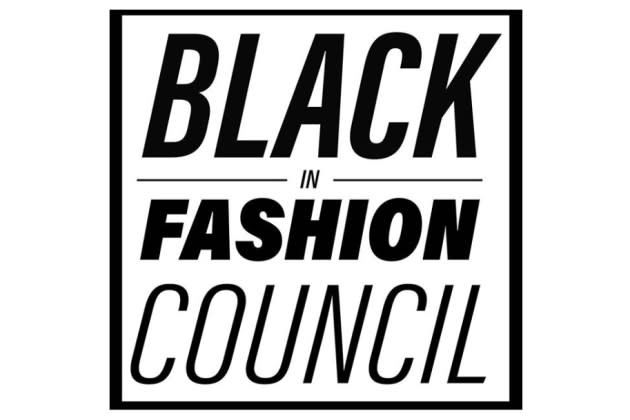BruceGlen Designers and GVDŠ’ Founder Share Future Plans During NYFW

As eye-catching as some of the collections are in this season’s installment of the Black in Fashion Council showroom, the designers’ plans are even more interesting.
The by-appointment venue is open through Tuesday at Highline 9, where lines from Amari Carter, BruceGlen, GVDŠ, Kaayahri, Nia Thomas, Omol, Qoh Jewelry, Silver and Riley and V. Bellan can be found. During a walk-through Sunday, a few of the creatives spoke about their ventures.
More from WWD
Celebrities Front Row at Coach Fall 2024 Ready-to-Wear: Kelsea Ballerini, Camila Mendes and More
Ludovic de Saint Sernin Celebrates NYFW Debut at the Boom Boom Room
Wearing boldly colored separates that they had designed, BruceGlen designers Bruce and Glen Proctor described how collaborative their lives are. After participating in the Black in Fashion Council showroom, the pair were due to fly to Milan for a showroom and then on to Paris for another one. They are also working on an animated video series titled “The Adventures of Bruce and Glen,” and plan to pitch a cartoon series after that.
Instead of having a runway show as they have done in the past, they opted out to do the showroom, for their own mental health and to take a break from the craziness that comes with doing a show. “Switching gears” also has enabled them to speak with people one-on-one about the spring collection and its inspiration. On and off for the past 17 years, the duo have had the BruceGlen brand, and for the past three years it has been as it is known today.
Distribution is through Saks Fifth Avenue and Shopbop, as well as direct-to-consumer. Selling to major retailers “legitimizes” a brand, according to the cofounders, who impersonated how people’s interest changes drastically after learning that they sell to Saks. Based in downtown Los Angeles for the past two years, the pair used to lived in New York and they return monthly. Having eased into the West Coast life — especially the abundance of sunshine and a rooftop pool — they said that living in New York had somewhat “ravished” them due to ”the hustle-and-the-bustle and the craziness” of the city. “We had high blood pressure,” Glen Proctor said.
“L.A. caused us to slow down and take a breath. We’ve been working on getting better at that day-by-day,” Bruce Proctor added.
Living together and working together, they said they have also gotten better about not talking shop on the weekends, preferring a regularly scheduled brunch and rooftop time. They are also ministers and founded a Los Angeles church called “The Church,” which has a branch in Manhattan’s Open Jar Studios. They said the community has turned out to be a collaborative one, since many of the members are artists and other creatives.
Participating in the showroom for the first time, Muktar Onifade, founder of GVDŠ, spoke of his circuitous route to a fashion career. The Nigerian-born designer divides his time between Lagos, where the collection is made, and Los Angeles. Pronounced as “Gods,” the acronym signifies being gifted with diverse visual skills. With a background in mechanical engineering, he attended Georgia Tech University. He then worked at General Motors in Detroit for four years as a calibration specialist for new “high-level, high security” cars, which means that the models’ full designs are concealed from some, who work on them in the early stages of development, for proprietary purposes.
Despite not having had any training in fashion, Onifade used money from his first paycheck to buy a sewing machine. Being self-taught, he spent his nights after work teaching himself how to sew and quietly developing his brand in a small Detroit apartment. Learning to set a sleeve properly was a six-month exercise, but once that happened and he made his first garment, his life was forever changed.
After leaving GM in 2017, Onifade relocated to Los Angeles to focus more on his company. During the pandemic, he decided to spend more time in Nigeria so that he could promote African craftsmanship. His debut collection consists of primarily all-black styles, including a slimming blazer with multiple cutouts. Gesturing toward the GVDŠ assortment, he said, “When you think of African designs, you don’t necessarily think of silhouettes like this. There is more of a focus on contemporary African pieces that are colorful and flowy. Those are beautiful. But with my engineering background, I wanted to focus more on a minimalist aesthetic,” he said.
The designer said he is using African symbolism in different ways to reflect his culture and heritage, and to also inspire designers in Nigeria to realize, “‘Hey, you can really do this at the highest level locally.’ There are a lot of false stigmas about what can be made in Africa because of quality, resources and price points — the list goes on,” Onifade said. “There has to be somebody who takes the risk to showcase design in Africa.”
His intention is to build a design language with the lines and the cutouts of his silhouettes, and African symbols. For example, Ghanaian symbols such as “the eye that sees all” are used in a bracelet and for a futuristic handbag’s metal chain, which is removable and can double as a keychain. GVDŠ retails from about $350 to $2,500.
Best of WWD
